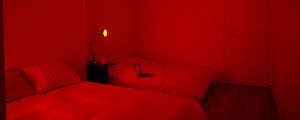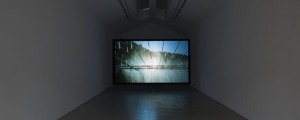While we might hear a lot about Iran in the news, it is unfortunately not usually related to its contemporary art scene. However, Iranian artist Farhad Moshiri’s exhibition at the Perrotin Gallery in Paris has a lot to say regarding the current climate of his homeland, showing how societal concerns always find a way to be expressed in art, even from within the most censored of countries.

Farhad Moshiri’s work explores the moment where East meets West; how Iran has found itself torn between two hemispheres. As Moshiri explains, “The Iranians are searching for their identity. Depending on their mood, they lean towards the East or the West. Iran is undergoing an inevitable phenomenon that complicates, confounds and diversifies traditions.” Using a hybrid of traditional and western inspirations, this exhibition is where you’ll find Pop Art mixed with traditional Iranian art techniques.

Iranian-born and still living in Tehran, Moshiri has exhibited internationally, from New York to Belgium and is back in Paris @ Perrotin for the second time with his solo collection entitled “The Fire of Joy”. His art focuses on the modern Middle East, and questions the idea of borders and frontiers. He constantly changes aesthetic and technique, exploring the fluid state of Iranian identity. Hot property on an international scale, Moshiri’s work is particularly sought after by middle-eastern collectors: his Swarovski-crystal-studded “Eshgh” was sold for more than a million dollars by Bonhams over four years ago.
“Fire of Joy” is an exhibition of colour, dexterity of hand, texture, and the typical amalgamation of different customs. For example, “Hammam” (2011) uses beautifully delicate hand embroidery to produce a tiled tableau, where one cannot help but think of Warhol’s pop art panels. His work is misleading: bright colours and familiar content (western images, an engaging aesthetic, use of cartoons and text) give way to darker observations. Moshiri offers us Arabic-speaking Disney cartoons, warped by grey ripples and violent Soviet-like red lines, canvases stabbed with protruding knives next to lilac-hued cartoon banquet scenes.

With bead embroidery, 1950s housewife advertisements, the word “God” made slogan in that familiar pop art paneling, “Fire of Joy” forces open a cultural division. Especially striking is his piece with tiled panels of 21 European portraits from the last century, scribbled over with the word “Quiet” written out with knives pinioned into the canvas.
Another particular stand-out piece is the blue cartoon sketch of a Native American boy, cleverly portrayed with his shadow projected onto a screen behind him. Simple but with a quasi-sardonic depth, this painting is a literal example of what Moshiri is doing, as the gallery’s description explains “He [plays] upon the concept of “happiness”, which for him leaves greater place for sarcasm and cynicism”. I would argue that, yes, there is a lot of dark observational irony in Moshiri’s work. There is the intelligence and personality that has made him such an international success story. But in this exhibition there is also a profound attachment to his roots, and a fresh, stimulating conversation with cultural dichotomy. The entire exhibition has a sense of the oxymoronic about it.

(Fire of Joy opened last Saturday and will on until July 28th)



















